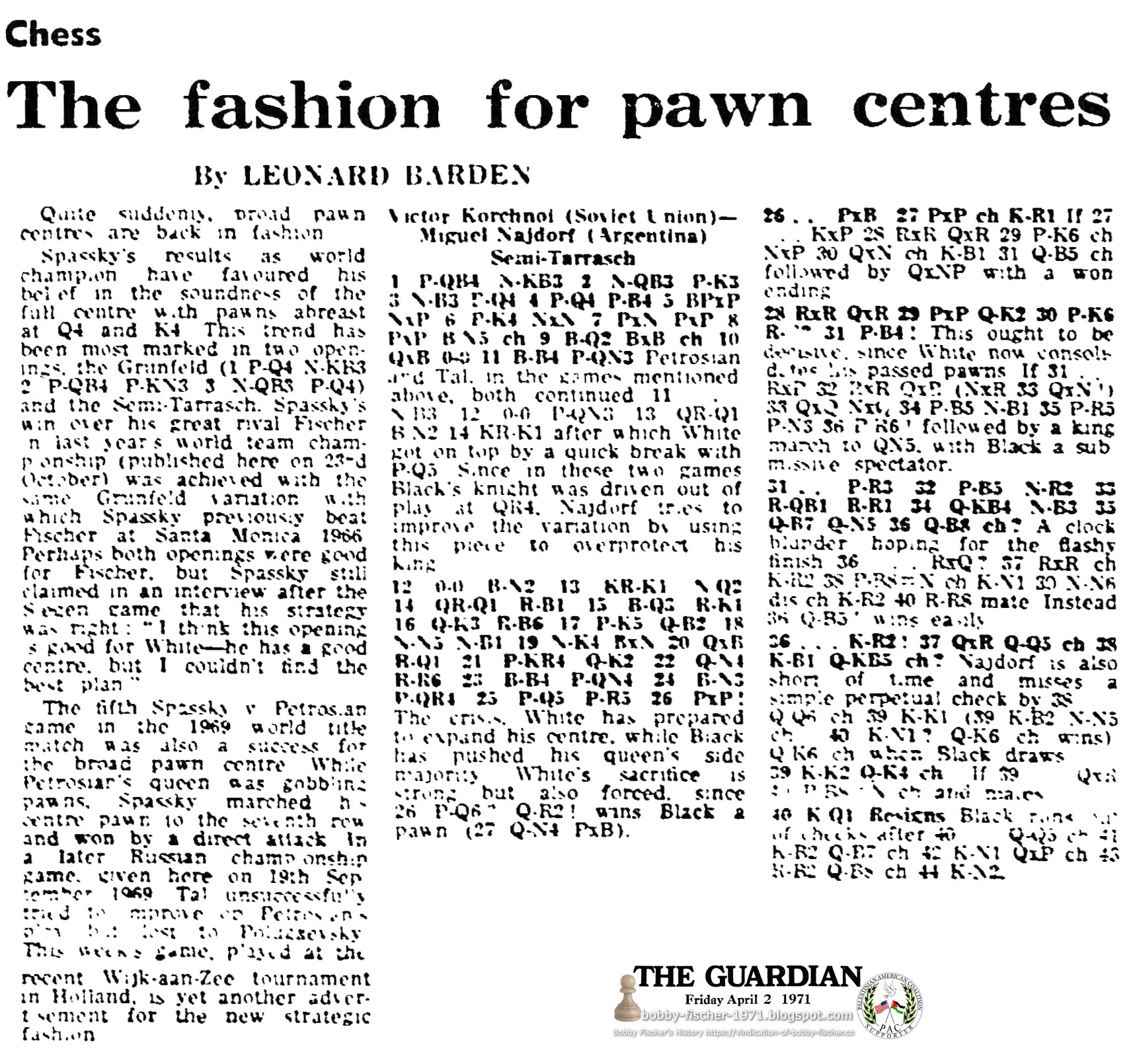The Guardian London, Greater London, England Friday, April 02, 1971 - Page 22
The Fashion for Pawn Centers by Leonard Barden
Quite suddenly, broad pawn centers are back in fashion.
Spassky's results as world champion have favored his belief in the soundness of the full center with pawns abreast at Q4 and K4. This trend has been most marked in two openings, the Grunfeld (1. P-Q4 N-KB3; 2. P-QB4 P-KN3; 3. N-QB3 P-Q4) and the Semi-Tarrasch, Spassky's win over his great rival Fischer in last year's world team championship (published here on 23rd October) was achieved with the same Grunfeld variation with which Spassky previously beat Fischer at Santa Monica 1966. Perhaps both openings were good for Fischer, but Spassky still claimed in an interview after the Segen game that his strategy was right: “I think this opening is good for White—he has a good center, but I couldn't find the best plan.”
The fifth Spassky vs. Petrosian game in the 1969 world title match was also a success for the broad pawn center. While Petrosian's queen was gobbling pawns, Spassky marched his center pawn to the seventh row and won by a direct attack in a later Russian championship game, given here on 19th September 1969 Tal unsuccessfully tried to maneuver on Petrosian's play but lost to Polaesevsky. This week's game, played at the recent Wijk-aan-Zee tournament in Holland, is yet another advertisement for the new strategic fashion.
The Guardian London, Greater London, England Friday, April 02, 1971 Problem No. 1134 White mates in seven moves at the...
Posted by Bobby Fischer's True History on Wednesday, May 6, 2020
Problem No. 1134
White mates in seven moves at the latest, against any defence (by G. Sladek)-an offbeat problem with a 'long' solution, but easier than most two-movers.
FEN 7k/5prp/K3pN1R/8/8/8/8/8 w - - 0 1























